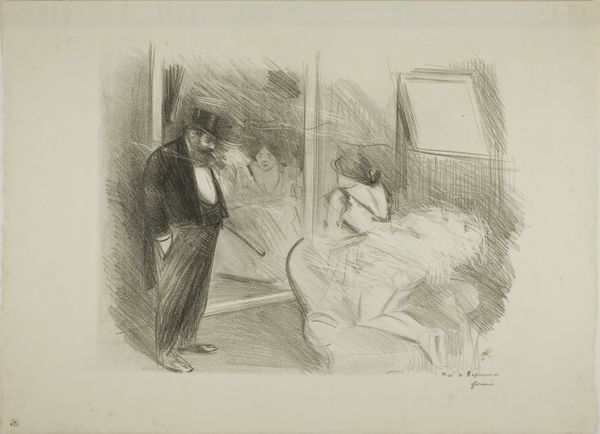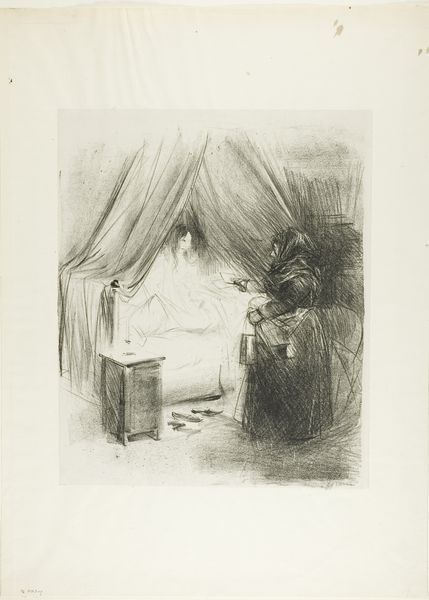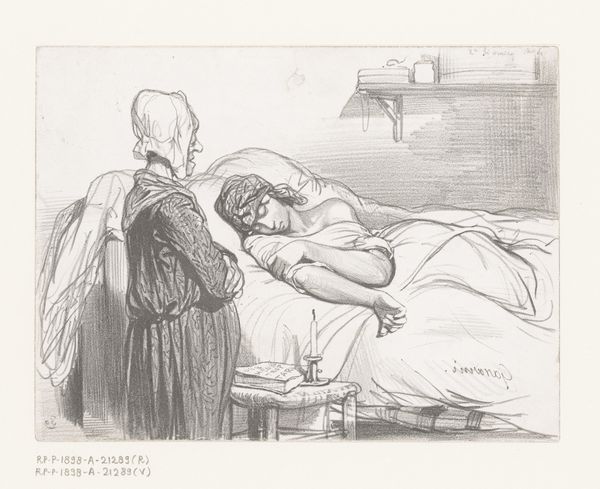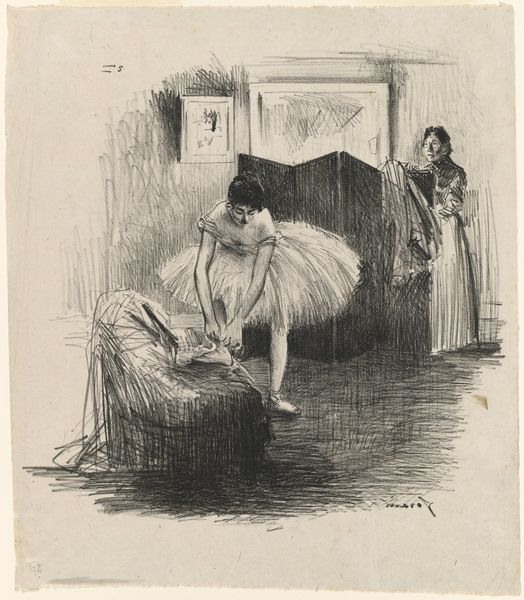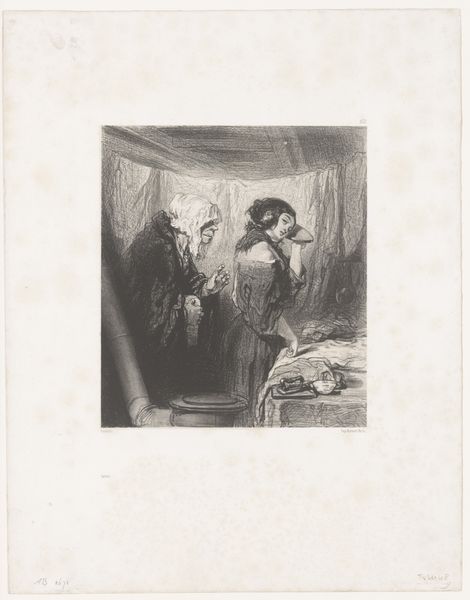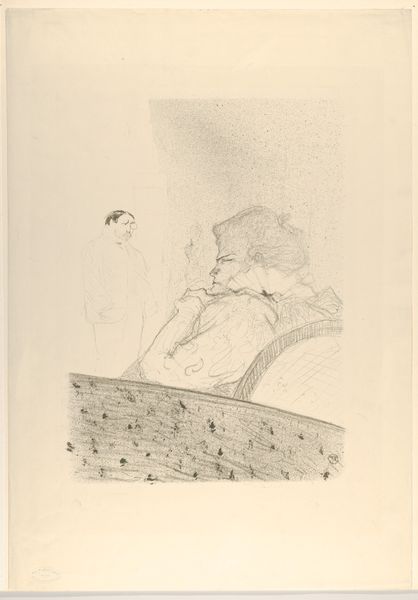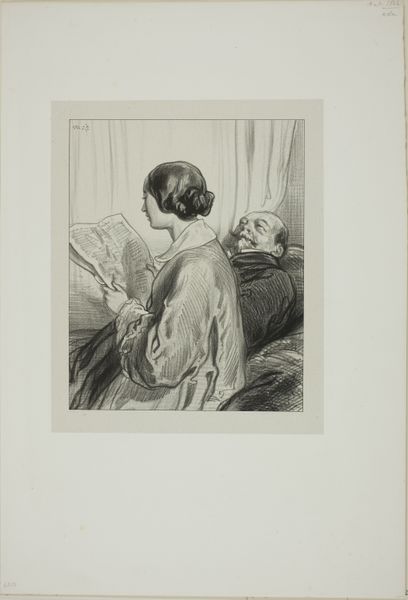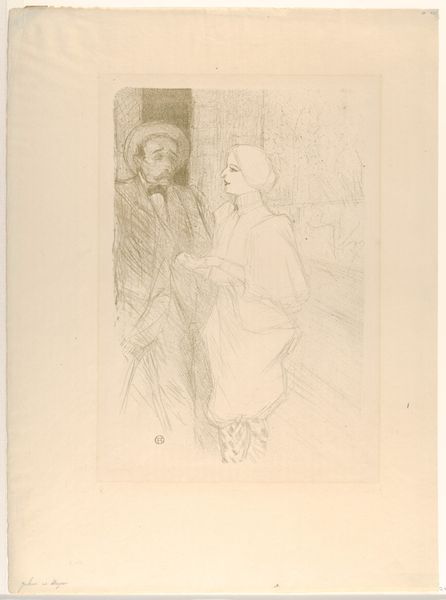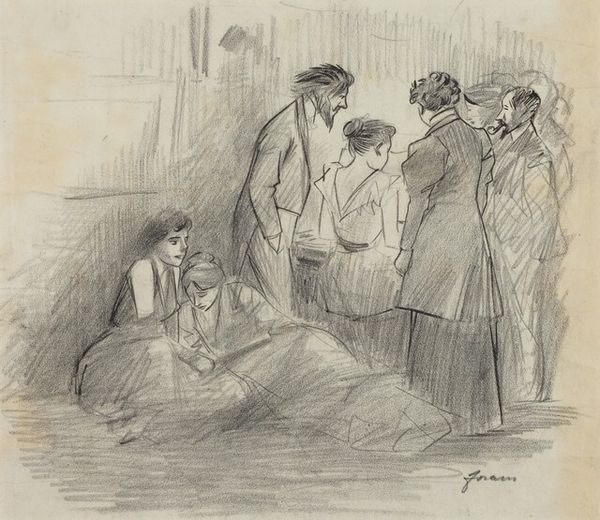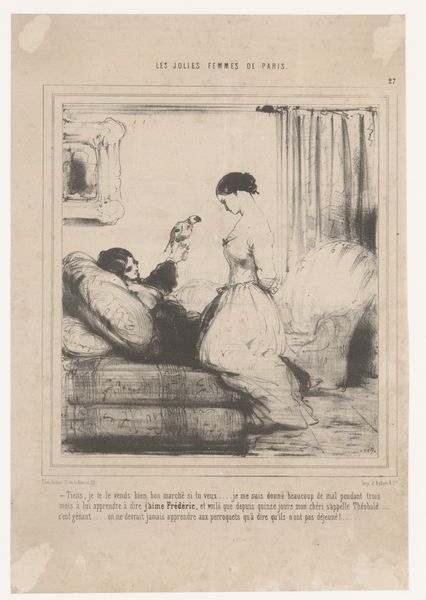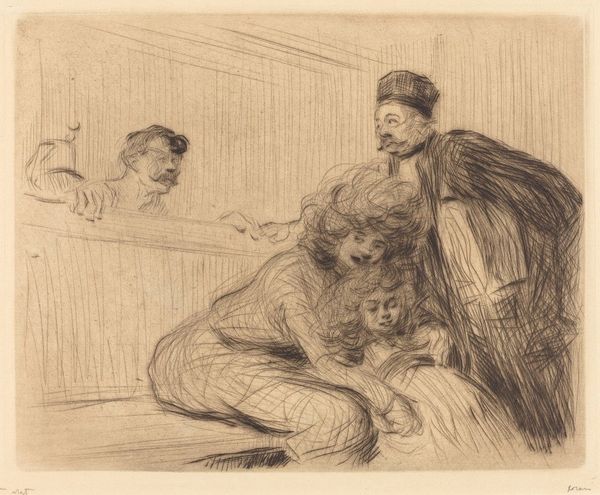
Dimensions: 280 × 353 mm (image); 395 × 526 mm (sheet)
Copyright: Public Domain
Curator: Jean-Louis Forain's 1894 lithograph and etching on paper, titled "Dancer's Dressing Room, Second Plate," hangs before us. What is your initial reaction? Editor: I'm immediately struck by the stark contrast of elegance and vulnerability. A suited man in the foreground regards a young dancer who seems rather uncomfortable, reflected in a mirror—or is it a window? There's a sense of power and exposure mingling here. Curator: The impression of power is significant. Forain was a master of capturing the social dynamics within the Parisian world of dance. Etching and lithography, mass production techniques, brought these observations to a wider audience, challenging notions of art’s exclusivity. His choice of materials and reproductive method here is deeply implicated in how a market and culture around performance was shaped and distributed. Editor: I see a spiderweb of implied meaning in the details. The mirror becomes a symbol of self-awareness but also societal judgment. Her tutu becomes a stage costume and emblem of her trade. The man, likely a patron or someone of power, is shown gazing, but we see her gaze meeting ours in the mirror. It's unnerving. What do you make of the spatial composition? Curator: The composition deliberately places the viewer outside this intimate space, forcing us into a position of voyeuristic observer. Notice the dress hanging on the wall, or the performer adjusting her shoes. We glimpse what happens away from the stage itself: a labor often not shown. The raw reality clashes with the idealized art form on display. Editor: Exactly. The reflection becomes a psychological space. We are implicated. It raises uncomfortable questions about wealth, patronage, and objectification, using imagery and symbols that reverberate even today. Curator: And through this very deliberate arrangement and deployment of these inexpensive reproductive materials, Forain offered a critical look at these social relationships. Editor: Looking at it from this perspective now gives me a renewed view of this piece. Curator: And considering its original purpose reminds us of its lasting relevance, as we are constantly negotiating similar displays and relationships of looking in our daily lives.
Comments
No comments
Be the first to comment and join the conversation on the ultimate creative platform.
